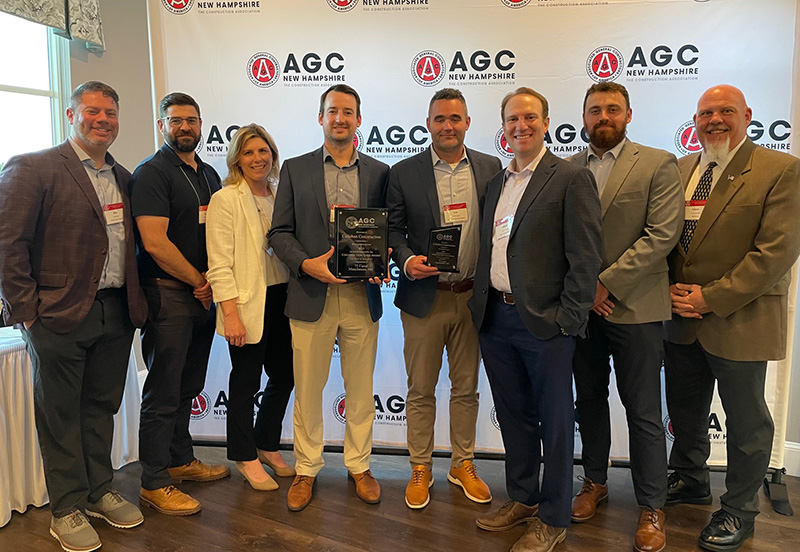News: Construction Design & Engineering
Posted: May 14, 2015
Collaboration in construction - old concept, new meaning
Warm, dry weather is here to stay, but you won't find many construction professionals with time to smell the roses. Between aggressive project deadlines, and residual delays caused by historic snowfall, everyone in the business is up to his or her neck in work, whether on the jobsite or back at the office, or even at home.
Since time waits for no one, construction companies are increasingly turning to various forms of collaboration to identify problems beforehand, minimize miscommunication, and maximize "buy-in" across the entire construction spectrum, from conceptual design to the final trade work. Having architects, general contractors and subcontractors in agreement on the project's direction, process and schedule right from the start - and even earlier, during preconstruction - increases the chances of having a smooth, orderly work flow and a project that is delivered on time and on budget.
This sounds like common sense, but in fact it's a paradigm shift from the old way of doing construction, particularly for subcontractors. Traditionally, subcontractors report to the worksite when their portion of the project is ready to commence; however, by that point, the window of opportunity to identify problems has been lost, and costly delays can occur. Establishing a "big room" approach at the start of the project, where all parties involved at any point in time during the project can review information and compare notes, sheds light on the previously unforeseen. And in construction, forewarned is forearmed.
This type of preconstruction collaboration manifests itself in many ways, often described with monikers such as "design assist" and "integrated project delivery." What's overlooked is that the concept of collaboration between design professionals, general contractors and subcontractors occurs constantly on construction sites - usually very early in the morning before the day's work begins. Applying that same concept to the preconstruction phase is a natural extension of that dynamic...and one that's been proven to produce desirable results, particularly on complex projects with numerous companies, project managers, and tradespeople involved.
And for those unfamiliar with the term, get ready to hear much more about "lean construction" in the months and years to come. Borrowing principles from lean manufacturing, which systematically eliminates waste during the manufacturing process, lean construction seeks to manage and improve construction processes through a collaborative team approach designed to minimize cost, and maximize value. That sounds lofty, but in essence it simply refers to the coordinated process of eliminating waste and delays throughout a project, to achieve a better project outcome. In an industry driven by schedule and cost - lean methods are quickly becoming another necessary form of project collaboration.
So while the terminology may change, one thing remains the same: failing to plan is planning to fail. With new forms of planning and collaboration, today's construction industry is redefining a successful project - and reducing the risk of failure. And today's high-tech subcontractors are playing a key role in that process.
Richard Fisher is president of the Associated Subcontractors of Mass., Boston.
MORE FROM Construction Design & Engineering
Nobis Group awards Robinson and Moreira STEM scholarships
Concord, NH Nobis Group, a 100% employee-owned consulting firm specializing in engineering and environmental solutions across the Northeast, has named the recipients of its 2025 STEM Scholarship: Andie Moreira of

Columns and Thought Leadership

The design-build advantage: Integrated interior design solutions - by Parker Snyder
When it comes to corporate interior spaces for both commercial and industrial projects, partnering with a design-build firm with in-house interior design services can offer clients many benefits. Unlike traditional delivery methods where interior designers operate independently from the design and construction teams, often creating a longer project timeline as cost negotiations and revisions ensue

The rise of incubators and co-working spaces: The latest in life sciences - by Matt Combs
In recent years, the life science industry has witnessed a shift in how companies operate and innovate. One of the key driving forces behind this transformation is the emergence of incubators and co-working spaces specifically tailored to meet the unique budget and schedule needs of startups.

Ask the Electrician: Is summer a prime time for commercial electrical maintenance?
The answer is “Yes!” While January marks the official new year, many businesses view September as a fresh start. This makes summer an ideal time for commercial property owners to schedule long-term electrical maintenance projects.

Careers in Construction Month focus on training and safety - by Joe Camilo
October is Careers in Construction Month, and rarely has it been more consequential. According to our chapter’s national parent organization, the construction industry needs to attract half-a-million new workers in the coming year to meet demand. Addressing that need is a huge job, but we at ABC MA are trying to do our part.







.png)